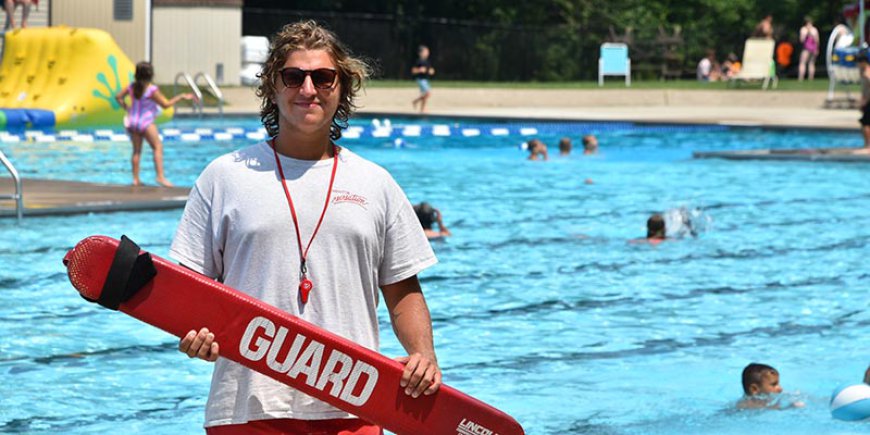The Essential Guide to Lifeguard Recertification

Lifeguard recertification is a crucial aspect of maintaining safety in aquatic environments. As lifeguards are responsible for ensuring the safety of swimmers, keeping their skills up to date is imperative. This guide aims to provide a comprehensive overview of the lifeguard recertification process, including its importance, requirements, and tips for success.
Why Lifeguard Recertification Is Important
Ensuring Public Safety
The primary purpose of lifeguard recertification is to ensure that lifeguards are fully prepared to handle emergencies effectively. Over time, techniques and guidelines can change, making it essential for lifeguards to stay updated on the latest safety protocols. Regular recertification helps ensure that lifeguards are equipped with the skills needed to prevent accidents and respond to emergencies.
Legal and Professional Responsibilities
Lifeguards have a legal and ethical responsibility to provide a safe environment for swimmers. Failure to maintain certification can lead to liability issues for both the lifeguard and the facility they work for. Being certified also enhances a lifeguard's credibility, making them more marketable in the job market.
Skill Retention and Refreshment
Regular training and recertification help lifeguards retain critical skills that can diminish over time. Skills such as CPR, first aid, and rescue techniques require practice to remain effective. Recertification provides an opportunity for lifeguards to refresh their knowledge and skills, ensuring they are always prepared for emergencies.
Recertification Requirements
Eligibility Criteria
Before enrolling in a recertification course, lifeguards must meet specific eligibility criteria. Typically, candidates must:
- Hold a current lifeguard certification that is nearing expiration.
- Provide proof of previous training in CPR, first aid, and water rescue techniques.
- Complete a minimum number of training hours as required by the certifying organization.
Course Components
The recertification course usually includes a combination of theoretical and practical training. Key components often include:
- Review of Lifeguard Training: Lifeguards revisit key concepts from their initial training, including water safety, emergency response protocols, and accident prevention strategies.
- Skill Assessments: Candidates must demonstrate their proficiency in essential skills such as CPR, first aid, and rescue techniques. This may involve both written exams and practical evaluations.
- Updated Training Techniques: Lifeguards learn about any new protocols or changes in guidelines that have emerged since their last certification. This can include changes in equipment, techniques, or safety regulations.
The Recertification Process
Step 1: Choose a Certified Course
Lifeguards should select a recertification course that is recognized by a reputable certifying organization, such as the American Lifeguard. Check the course's details, including the duration, format (in-person or online), and fees.
Step 2: Register for the Course
Once you’ve selected a course, register as early as possible to secure your spot. Many courses fill up quickly, especially during peak hiring seasons for lifeguards.
Step 3: Prepare for the Course
To maximize your chances of success, it's important to prepare before attending the recertification course. Review your previous training materials, practice essential skills, and get in shape. This will help you perform confidently during skill assessments.
Step 4: Attend the Course
Participate fully in the recertification course. Engage with instructors, ask questions, and practice skills diligently. Take advantage of any hands-on training opportunities, as they are invaluable for reinforcing what you’ve learned.
Step 5: Complete Assessments
Be prepared to complete both written and practical assessments. Study hard for the written portion and practice your skills to ensure you pass the practical evaluations.
Step 6: Receive Your New Certification
Upon successfully completing the course and assessments, you will receive your updated lifeguard certification. Keep this certification on hand, as it will be required for employment in the field.
Tips for Successful Recertification
Stay Physically Fit
Being in good physical condition is crucial for passing lifeguard recertification assessments. Regularly practice swimming, endurance training, and strength workouts to ensure you can meet the physical demands of the course.
Practice Skills Regularly
Even if you have completed a lifeguard course in the past, it’s essential to keep your skills sharp. Practice key techniques, including CPR and rescue methods, regularly to maintain your proficiency.
Study the Material
Review all training materials thoroughly before attending the recertification course. Familiarize yourself with any updated guidelines or protocols that may have changed since your last certification.
Ask Questions
Don’t hesitate to ask questions during the course. Engaging with instructors and fellow lifeguards can provide valuable insights and enhance your understanding of the material.
Network with Other Lifeguards
Use the recertification course as an opportunity to connect with other lifeguards. Networking can provide support, share resources, and open doors to job opportunities in the future.
Final opinion
Lifeguard recertification is an essential process that ensures lifeguards remain equipped to protect the public effectively. By understanding the importance of recertification, meeting the requirements, and following the process, lifeguards can maintain their certification and continue to serve their communities safely. Investing time in training not only benefits lifeguards but also promotes a safer environment for everyone who enjoys aquatic activities.
